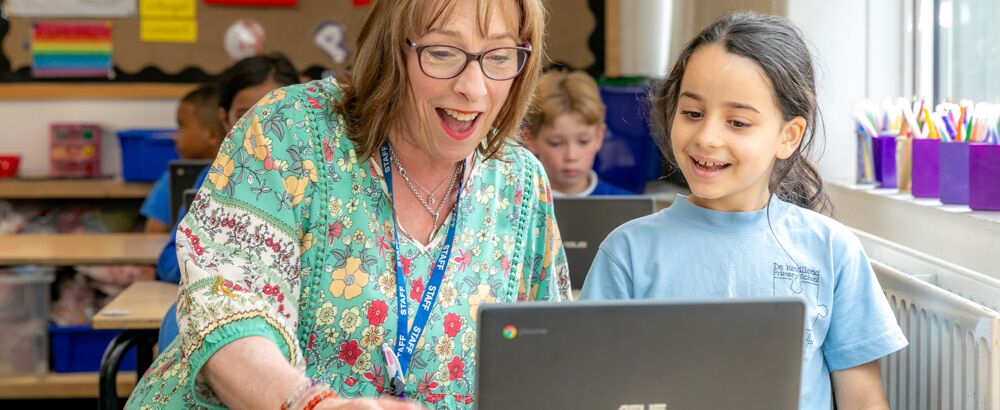Results
Compare School PerformaNce - De Havilland Primary School
Results 2024-2025
Early Years Foundation Stage
We are very proud of the percentage of children working at age related expectations in the core areas of learning. Our results from both this year and last exceed that of the most recent national standard.
|
2024 |
2025 | National (2024) | |
|
Percentage of children achieving a good level of development |
71% | 73% | 68% |
Year One Phonics check
Please find below the outcomes for children’s Phonics in Year One.
|
2024 |
2025 | National (2024) | |
|
Percentage of children achieving the standard |
76% | 76% | 80% |
Multiplication tables check
Please find below results from the Year Four multiplication tables check (MTC).
|
|
2024 | 2025 |
National (2024) |
| Pupils scoring 100% | 33% | 11% | 34% |
| Mean score | 20.2 | 18.8 | 20.6 |
Key Stage Two School and National Data
After a dip in 2024, we are so incredibly proud of our Key Stage Two results from 2025. Please find below our results from the last three years and how these compare with the results from other years as well as the national picture across England.
|
Subject |
Percentage of children achieving at least the Expected Standard |
|||
| 2023 | 2024 |
2025 |
National (2025) |
|
| English Reading |
73% |
64% | 76% | 75% |
|
English grammar, punctuation and spelling |
76% | 62% | 80% | 73% |
|
Mathematics |
73% | 62% | 69% | 74% |
|
English writing (teacher assessment) |
77% | 71% | 78% | 72% |
|
Science (teacher assessment) |
80% | 75% | 78% | 82% |
|
Reading, writing and mathematics combined |
62% | 49% | 61% | 62% |
Please find below our greater depth results from the last three years and how these compare with the national picture across England.
| Subject | Percentage of children achieving Greater Depth | |||
| 2023 | 2024 | 2025 | National (2025) | |
| English reading | 32% | 15% | 29% | 33% |
| English grammar, punctuation and spelling | 42% | 28% | 41% | 29% |
| Mathematics | 33% | 13% | 27% | 26% |
| English writing (teacher assessment) | 20% | 7% | 19% | 12% |
| Reading, writing and mathematics combined | 15% | 5% | 10% | 8% |
Progress at De Havilland
Due to the coronavirus pandemic, the government will not be producing or publishing primary progress measures for the 2023/24 and 2024/25 academic years, meaning the most recent results are from 2022/23.
The table below shows the average progress score for reading, writing and maths.
Most schools will have progress scores between −5 and +5. If a school has a
progress score of 0 this means that on average their pupils achieved similar results
at the end of Key Stage Two to pupils in other schools with similar results at the end
of Key Stage One. If a school has a positive progress score this means that on
average their pupils made more progress than pupils in other schools with similar
results at the end of Key Stage One.
| 2019 | 2022 | 2023 | |
| Reading | -2.21 | 0.28 | 4.0 |
| Writing | -0.30 | 2.24 | 5.0 |
| Mathematics | -4.69 | -0.77 | 4.8 |
The progress measures aim to capture the progress that pupils make from the end of
Key Stage One to the end of primary school. They are a type of value-added
measure, which means that children’s results are compared to the actual
achievements of other pupils nationally with similar prior attainment.
A school’s progress scores in English reading, English writing and mathematics are
calculated as the average of its children’s subject progress scores. These scores
give an indication of whether, as a group, pupils in the school made above or below
average progress in a subject compared with pupils with similar starting points in other schools.


